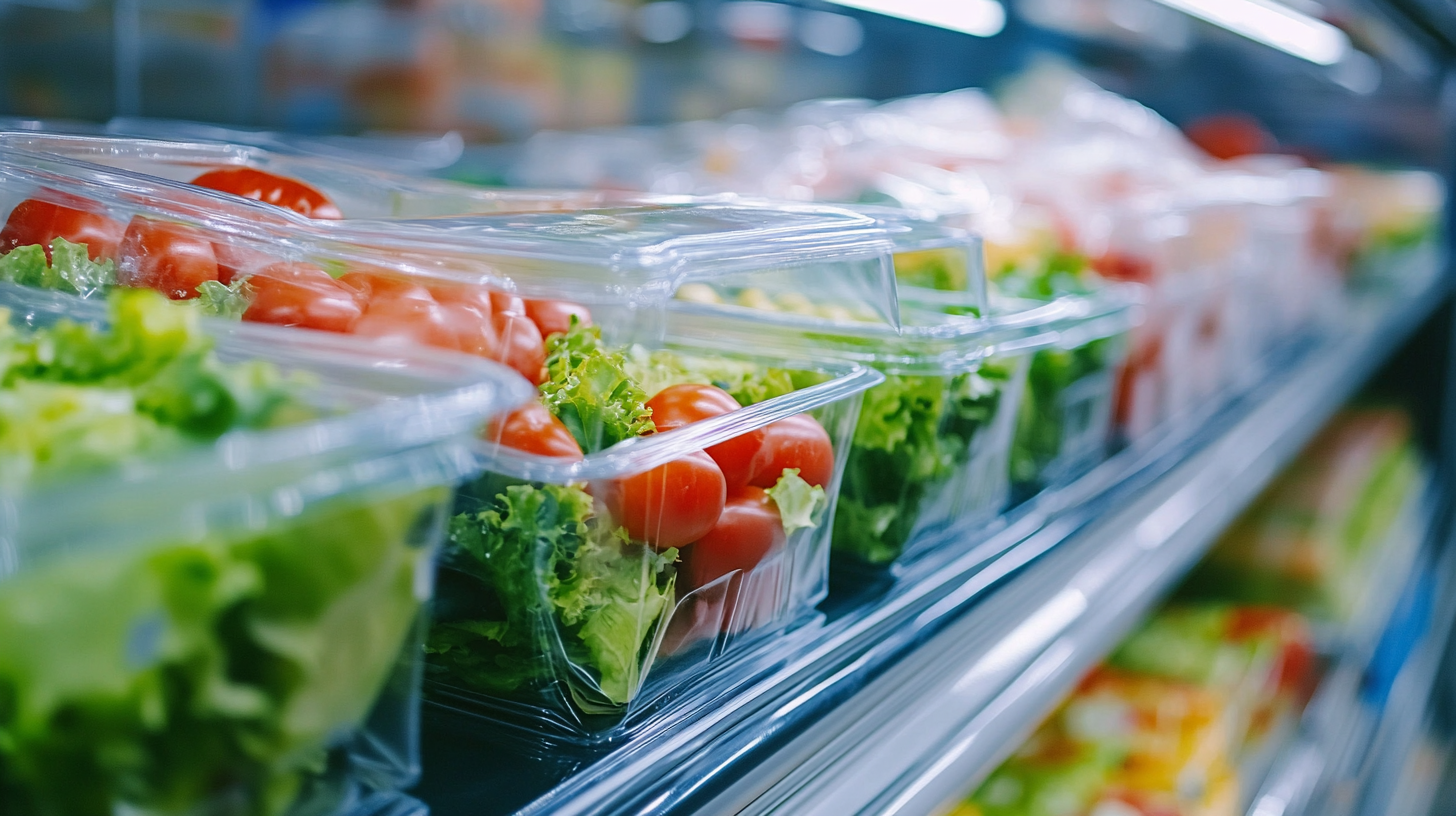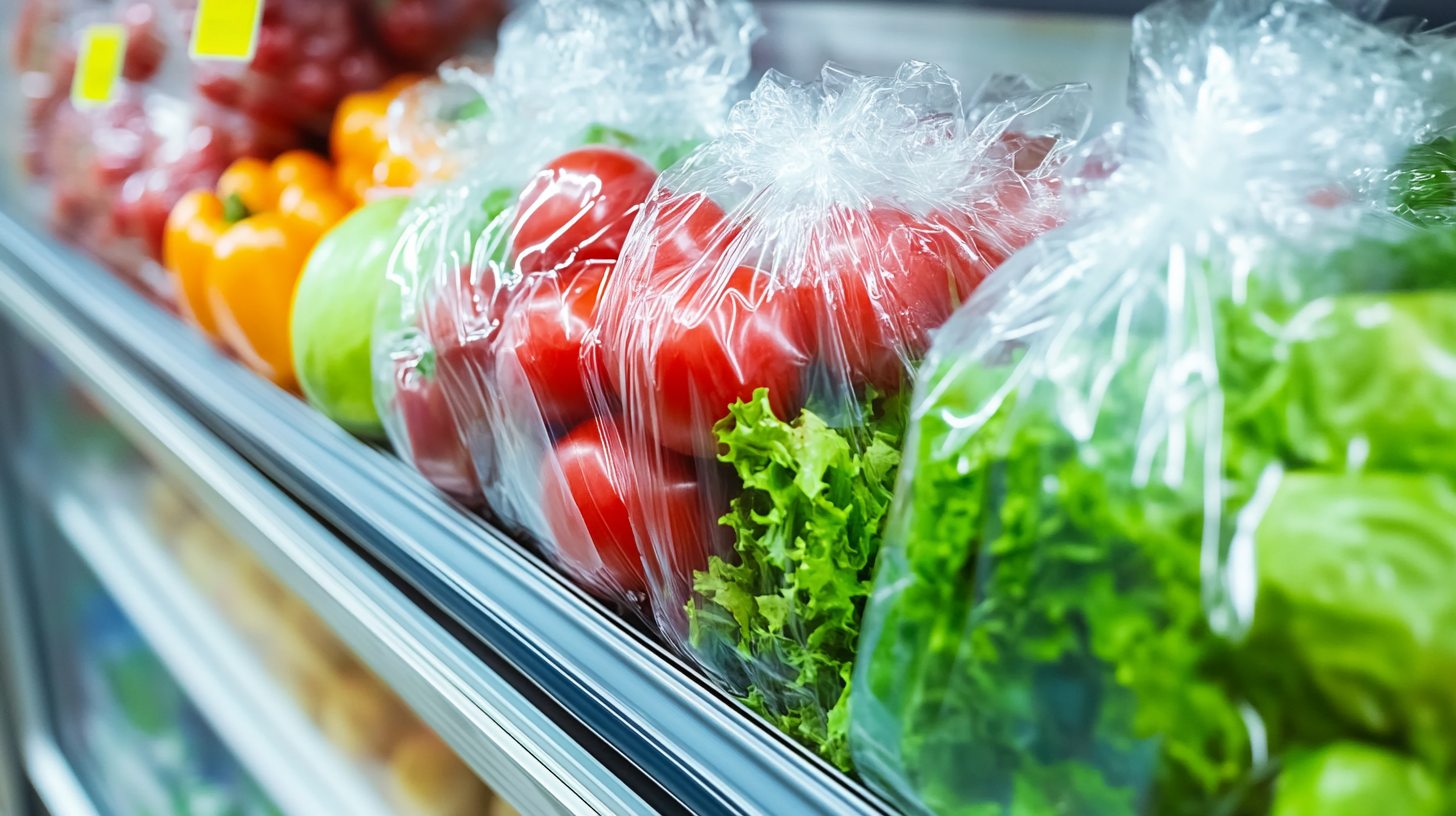Future Innovations in Food Packaging Plastic Roll for 2025 with Essential Procurement Checklist
In recent years, the food packaging industry has undergone significant transformations driven by innovation and sustainability, with the global food packaging market projected to reach USD 500 billion by 2025. A key component of this sector is the Food Packaging Plastic Roll, which has become increasingly essential due to its versatility, cost-effectiveness, and ability to extend shelf life. According to the latest market research, the demand for flexible packaging materials, including plastic rolls, is expected to grow at a CAGR of 4.5% from 2020 to 2025, spurred by changing consumer preferences towards convenience and sustainability. As we venture into 2025, manufactures are now focusing on developing eco-friendly alternatives that not only meet regulatory demands but also cater to an expanding global market. This blog outlines the future innovations in Food Packaging Plastic Rolls, emphasizing the significance of strategic procurement strategies essential for staying competitive in this rapidly evolving landscape.

Emerging Trends in Food Packaging Plastics for 2025
In 2025, the food packaging industry is poised for significant transformation, driven by emerging trends in plastic use. As sustainability and convenience take center stage, manufacturers are increasingly adopting eco-friendly materials and smart packaging technologies. These innovations not only cater to consumer preferences but also comply with stringent regulations focused on reducing environmental impact.
To stay ahead in this dynamic market, businesses should consider implementing a robust procurement checklist. This includes evaluating suppliers based on their sustainability practices, ensuring that materials are recyclable or biodegradable, and researching cutting-edge packaging technologies that offer enhanced shelf life and consumer engagement. It’s vital for companies to adapt swiftly to these changes, anticipating the future needs of consumers.
One notable trend is the rise of smart packaging, which utilizes sensors and indicators to monitor freshness and safety. Brands can leverage this technology not only to improve product quality but also to enhance the overall consumer experience. Being proactive in adopting these trends not only positions companies favorably for growth but also aligns them with the evolving expectations of environmentally-conscious consumers.
Key Technologies Shaping the Future of Plastic Roll Packaging
 The future of plastic roll packaging is poised for groundbreaking innovations that will reshape the way we approach food preservation and distribution. Key technologies such as biodegradable materials, smart packaging solutions, and enhanced barrier properties are leading the charge. Biodegradable plastics, made from renewable resources, offer an eco-friendly alternative to traditional plastics, significantly reducing environmental impact. This shift towards sustainability is not just a trend but a necessity in meeting consumer demands for greener products.
The future of plastic roll packaging is poised for groundbreaking innovations that will reshape the way we approach food preservation and distribution. Key technologies such as biodegradable materials, smart packaging solutions, and enhanced barrier properties are leading the charge. Biodegradable plastics, made from renewable resources, offer an eco-friendly alternative to traditional plastics, significantly reducing environmental impact. This shift towards sustainability is not just a trend but a necessity in meeting consumer demands for greener products.
Smart packaging is another transformative technology that is gaining traction. By incorporating sensors and indicators, this new packaging can monitor freshness and provide real-time information about the product’s condition. Such advancements not only enhance food safety but also reduce waste by allowing consumers to make informed decisions.
Additionally, improved barrier technologies are being developed to extend shelf life and maintain product integrity, facilitating longer storage periods without compromising quality. Together, these technologies are setting the stage for a new era of food packaging that prioritizes both functionality and sustainability.
Sustainability Initiatives in Food Packaging: The 2025 Vision
As we look towards 2025, sustainability initiatives in food packaging are becoming increasingly vital. With the growing awareness of environmental issues, food manufacturers and packaging suppliers are under pressure to adopt eco-friendly practices. This shift is not just a trend; it's a necessity driven by consumer demand for greener alternatives. Innovative materials, such as biodegradable plastics and plant-based packaging, are paving the way for a future where food packaging has a reduced environmental footprint.
Companies are now prioritizing the Life Cycle Assessment (LCA) of their packaging solutions, ensuring they consider the environmental impact from production to disposal. By 2025, we anticipate a significant increase in the use of recycled materials and closed-loop systems, where packaging is continuously reused and repurposed. Collaborations among stakeholders, including retailers, producers, and consumers, will play a crucial role in driving these sustainability initiatives forward, ultimately leading to a smarter, more sustainable food packaging landscape.
Future Innovations in Food Packaging Plastic Roll for 2025
Essential Features for a Modern Food Packaging Procurement Checklist
As the demand for sustainable and efficient food packaging solutions continues to rise, the procurement of plastic roll packaging in 2025 will necessitate a keen focus on essential features that align with both environmental standards and consumer expectations. First and foremost, transparency in material sourcing is critical. Buyers should prioritize packaging produced from recyclable or biodegradable materials, ensuring that they support the circular economy. Additionally, suppliers must demonstrate compliance with food safety regulations, guaranteeing that their products meet the highest health standards.
Another key aspect of a modern procurement checklist is the emphasis on technology integration. Packaging that utilizes advanced manufacturing techniques allows for better shelf life and reduced waste, thus benefiting both producers and consumers. Furthermore, customizable options that cater to specific food products can enhance functionality while enhancing brand appeal. Procurement processes should also consider the logistical efficiency of the packaging. Lightweight and compact designs can significantly reduce transportation costs and carbon footprint. In conclusion, the convergence of sustainability, safety, and innovation will define the future landscape of food packaging procurement, enabling businesses to thrive in a competitive market.
Future Innovations in Food Packaging Plastic Roll for 2025 with Essential Procurement Checklist
| Feature | Description | Importance | Expected Impact by 2025 |
|---|---|---|---|
| Biodegradability | Materials that break down naturally to reduce environmental impact. | High | Reduction in landfill waste. |
| Barrier Properties | Enhanced protection against moisture, oxygen and light to extend shelf life. | High | Decreased food spoilage and waste. |
| Recyclability | Materials that can be processed into new products after use. | Medium | Increased circular economy participation. |
| Smart Packaging | Packaging with sensors that monitor freshness and provide real-time information. | Medium | Improved consumer safety and experience. |
| Lightweight Materials | Materials that reduce weight without compromising strength, lowering shipping costs. | High | Lower carbon footprint from transport. |
Comparative Analysis: Traditional vs. Innovative Food Packaging Solutions
In the ever-evolving landscape of food packaging, the distinction between traditional and innovative solutions is becoming increasingly critical. Traditional food packaging, often dominated by plastic films, cardboard, and glass, has served the industry well for decades. These materials provide adequate protection and shelf life; however, they come with significant drawbacks such as environmental concerns and limited functionality. The reliance on single-use plastics has led to rising waste levels and growing consumer demand for sustainable alternatives.

On the other hand, innovative food packaging solutions are emerging as a compelling response to these challenges. Advances in biodegradable materials, edible packaging, and active packaging technologies can not only reduce waste but also enhance food freshness and safety. Innovations like smart packaging, which uses sensors to monitor product conditions, provide consumers and retailers with real-time information, ultimately improving supply chain efficiency. As the food industry strives for sustainability and functionality, the shift towards these innovative solutions represents a crucial step toward a more responsible and efficient future in food packaging.

 中国
中国